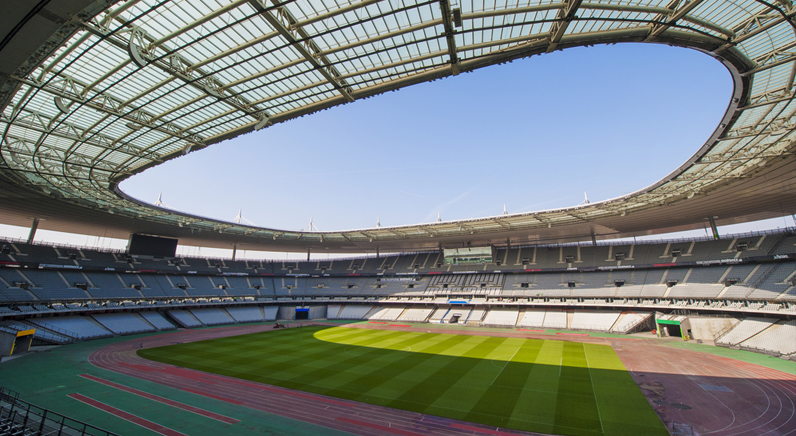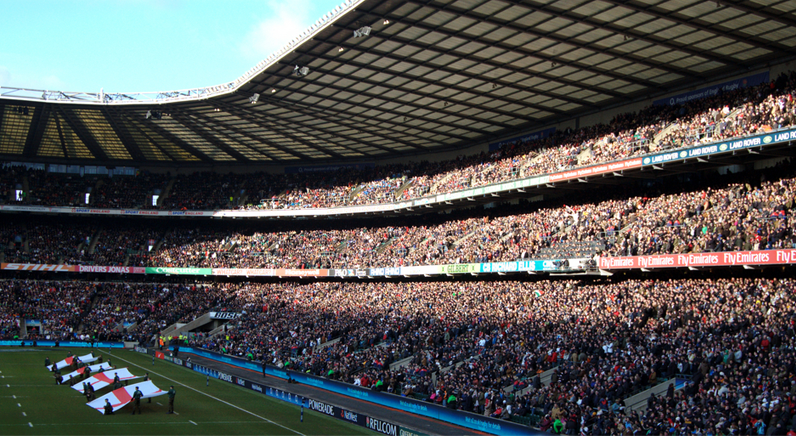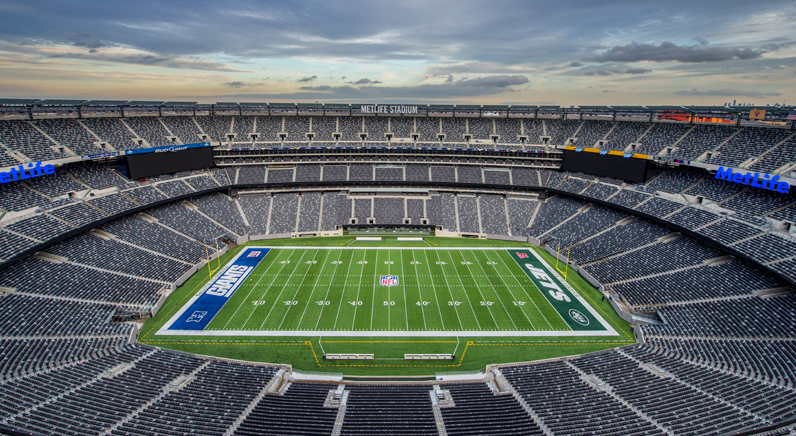Tackling stadium security and crowd management
Tim Compston, Features Editor at SecurityNewsDesk, talks to some of the key players who are involved in crowd management and security at major sporting venues.
With what happened in and around the Stade de France, and across Paris, still fresh in the memory, many sports grounds have been instituting a review of their security plans and evacuation procedures.
Stade de France in the firing line
From the various reports that have come out since that fateful November evening it would appear that the fans at the Stade de France, who were happily watching a friendly football game between France and Germany, had an extremely lucky escape in the way that events unfolded, especially in light of the 130 individuals who sadly perished at the Bataclan theatre and elsewhere. Crucially, at the Stade de France none of the terrorists were able to get beyond security at the ground so, although someone was killed walking past the area, things could have been so much worse if the bombers had been able to reach the thousands of fans inside. The fact that nuts and bolts were said to have been packed into their suicide vests shows that they were going out with the express intention of maiming and killing as many people as possible.
Looking back, the first sign of trouble on that November evening came just 15 minutes into the match when one of the terrorists, targeting the Stade de France, was prevented from entering the stadium during a routine security check when his suicide belt aroused suspicion. This, it is suggested, caused him to blow himself up outside the stadium, followed by a second individual detonating a suicide vest close to another entrance, and then – just over twenty minutes later – the final bomber setting-off the explosives he was concealing outside a nearby fast food outlet.

Not surprisingly in the days that followed the authorities across Europe were on high alert, with the potential for follow-on attacks uppermost in their minds. This resulted in the cancellation of a number of football matches including between Belgium and Spain in Brussels – with some of those involved in the multiple Paris attacks having travelled from France’s near neighbour. In the case of Hannover, an evacuation was instituted less than two hours before the kick-off of the Germany – Netherlands fixture. This was based on a credible threat that plans were afoot to ‘detonate explosives’ said Germany’s minister of the interior, Thomas de Maiziere.
Security review
So what are the ramifications of the Stade de France situation for security providers and venues on the frontline? In a statement, issued soon after the attack, Karen Eyre-White, chief executive, at the UK’s Sports Grounds Safety Authority offered her condolences to the people of France and reiterated that the SGSA is committed to ensuring the safety and comfort of spectators at sports grounds. She went on to urge sports grounds, and those involved in spectator safety to ‘remain vigilant’ and ‘review relevant contingency plans’: “The UK government has issued a statement reminding that the threat from terrorism remains ‘Severe’,” she said. Eyre-White added that the National Counter Terrorism Security Office (NaCTSCO) had re-issued its advice on protecting crowded spaces and said that the SGSA was liaising with the government, NaCTSCO, the UK Police Football Unit, the football authorities and other parties.
Although it is was too early to go into much detail on any specific arrangements post-Paris, Eric Alexander, managing director of events at G4S was willing to offer some initial feedback. Alexander confirmed that, not surprisingly, there have been ‘numerous conversions in the security industry and with various stadia’ around this topic in recent weeks: “It is precautionary and wise to review all procedures. We are still very much guided by the police and the Home Office and other government agencies who are basically saying that the threat level is as it was.”
Discussing the practicalities, Alexander says that managing security at a football game is no easy task at the best of times before you start to throw terrorism into the mix: “Trying to get tens of thousands of people into a football ground is tricky enough, bearing in mind that the traditional way to go and view football is that you go out and arrive at the ground maybe 12-15 minutes before kick-off so there is a surge of people in those last minutes. If you create a queuing situation at security that is going to have operational effects as well.” Ultimately, Alexander says that there is much thinking to be done in the weeks and months ahead regarding how the logistics of all of this might play out for the authorities, emergency services, stadiums and security providers.
Rugby success
Turning our attention away from terrorist violence to a much more positive sporting experience, stadium-wise, the 2015 Rugby World Cup was certainly record-breaking with an impressive 2.47 million tickets sold across 48 matches for 13 venues, and, crucially, thankfully had very few crowd-related incidents beyond over-enthusiastic fans to report along the way.
In the case of the World Cup, Alexander reveals that G4S was involved in some of the security elements for a number of the venues, especially those where it already had a sporting connection: “We did the security overlay at St. James’ Park in Newcastle which was the external security at the perimeter. G4S also worked internally at the Etihad Stadium – where we have the security contract – and Elland Road [Leeds] as the incumbent. At Wembley there was a small amount in the hospitality area there. “Outside of the Rugby World Cup, Alexander confirms that G4S’s main rugby connection is with Scotland’s national rugby stadium at Murrayfield in Edinburgh.

Asked how the security procedures for an international rugby game compare to those for a football match, for example, Alexander replies that the most noticeable distinction – especially in the case of the Rugby World Cup – is that the event organisers were stipulating a ‘security overlay’ from the start: “Our people were doing bag searches and random searches before [World Cup] spectators got to the turnstiles, which is very different to match-day football.” Having said this, Alexander reveals that bag searches were also instituted at a recent Scotland-Poland football game: “That was derived from the fact that they wanted to make sure there wasn’t anything going into the stadium that shouldn’t have been brought through. For that match we were basically looking for glass bottles and flares. Obviously that sort of focus might change in light of what happened last month [the Paris attack],” says Alexander.
Key tracking
Back on the rugby field, a number of other security providers and manufacturers found their solutions winning through in the run-up to, and during, the Rugby World Cup. For its part, Traka – the key and asset management specialist – reveals that its Traka key management systems was installed by the RFU (Rugby Football Union) at Twickenham Stadium prior to hosting the tournament, as part of the ground’s refurbishment programme. The programme included investment in the latest access control technology with seven manually-operated key boxes replaced by two Traka L-Series key cabinets to unlock the ability to automatically track who has taken a specific key and, crucially, when it is returned. According to Traka the associated software even enables the on-site security team to grant access rights to users or individual key sets, as required.
Questioned about the value of the Traka systems to Twickenham, Phil Parker, head of security at the Rugby Football Union (RFU), said: “For a facility like Twickenham Stadium with so many businesses, people, and areas to oversee, having visibility of where keys are and who has used them makes individuals accountable. This in turn makes everyone more responsible. The whole security team is really impressed with the system and how it is helping us to centrally manage the distribution of our keys.”
Continuing on with the Twickenham theme, over the summer, Vindex Systems announced that it had been awarded the CCTV and access control upgrade for the venue and that work was scheduled for completion in time for the World Cup tournament. Interestingly, as part of this, Vindex Systems said that the contract involved upgrading both CCTV and access control systems to a unified Genetec platform plus full system and match-day maintenance support.

Touchdown at MetLife
Following-up on this development, Montreal-based Genetec was unable to give me any more details on the Twickenham project as we went to press but were happy to discuss other venues where its Security Center solution had scored highly. Perhaps the most notable of these is the 82,500 seat MetLife Stadium which is home to the New York Giants and New York Jets NFL teams.
A pivotal factor in sealing the deal was MetLife’s Stadium’s requirement for undisrupted video coverage throughout the venue. To meet this demand the integrator – Corporate Security Services – installed hundreds of cameras, the majority of which were high-resolution Arecont Vision megapixel and panoramic cameras, alongside PTZ (Pan-Tilt-Zoom) cameras. In turn these cameras were connected to Genetec Plan Manager, basically an interactive mapping module for Security Center which can provide an overhead-map view of the facility.
Chris Ritter, director of sales for Northeast United States for Genetec, who was involved in the MetLife project takes-up the story: “The first priority above anything else was the safety of the fans. What we have done is to put a lot of features in our product [Security Center] to take care of them when they are coming in or getting out of there.” He adds that what is referred to as ‘Federation’ functionality within Security Center means local law enforcement can ‘work that system’ for instant viewing and access: “If something happens immediately they can be involved and you can also escalate that to other emergency assistance,” says Ritter.
Ritter reckons that having an open architecture has given Genetec an edge in numerous projects like MetLife: “There is the ability to work with so many different manufacturers as you are going to have different cameras for the bowl, the exits and entrances as well as the parking lots. It is the ability to recognise what is going on in all areas.”
In addition, Ritter explains that Genetec has built-in the functionality to deal with different threat levels: “I like to refer to it more as situational levels so there is the ability to change the status of the system ‘on the fly’, firstly from a regular day to a game-day.” There is also the potential, explains Ritter, should something happen on game-day to go into a specific alert status: “This might be for an active shooter situation where by the touch of a button, or mobile app, your operators can have the system go into a lockdown of different features on your door access control, change the status of your cameras and then after that create a workflow for your operators.” The workflow capability, Ritter emphasises is a ‘full event-to-action mechanism’ so operators understand the next step that they need to implement: “What is it going to take to get those fans to safety or get emergency operators into the stadium?”
Touching on the subject of police involvement in crowd control, several years ago – at the invitation of Traffic Safety Systems (TSS) – I was able to see at first hand how the police were able to employ a Football Command Vehicle (FCV) equipped with mobile digital CCTV recording technology as a ‘force multiplier’. In this case it was the West Midlands Police deploying the FCV at Villa Park for a home game against Liverpool. Not only did the Football Command vehicle with its mast-mounted camera allow effective CCTV coverage of areas adjacent to the ground on the match day, it also provided a highly visible presence to deter trouble. Careful positioning of the vehicle helped the police to manage the dynamic of the crowd, keeping home and away fans apart, and prevented clashes and bottle necks from developing. The police commander for the game, and football intelligence officers on the lookout for known troublemakers, worked out of the FCV in the lead-up to kick-off and then moved to the stadium’s control room during the match before re-deploying to the FCV to ensure fans were dispersed effectively at the end of the match.
Building bollards
Of course with the heightened threat of terrorist attack, high security solutions like bollards are also becoming a vital ingredient to mitigate the risks posed by hostile vehicles targeted at major stadiums. One provider, Coventry-based Safetyflex Barriers which was involved in protecting multiple venues at the London Olympics recently reported that it has just secured its first order in Brazil on the back of its successful deployment during 2012: “We’re delighted to have now been chosen to secure key sites ahead of the Rio 2016 Olympics and Paralympics,” says Marcus Gerrard, director at Safetyfex Barriers.
The right game plan
To round-off on stadium security, at this stage the full ramifications of what happened at the Stade de France, and the best preventative and response measures, are still to emerge. Certainly more attention is likely to be given, moving ahead, to the sort of threat terrorism now poses and whether aspects like searches, evacuation plans, and ways of picking up suspicious activity need re-working, alongside the more usual crowd safety concerns.
[su_button url=”https://www.securitynewsdesk.com/newspaper/” target=”blank” style=”flat” background=”#df2027″ color=”#ffffff” size=”10″ radius=”0″ icon=”icon: arrow-circle-right”]For more stories like this read the SecurityNewsDesk Newspaper[/su_button]













